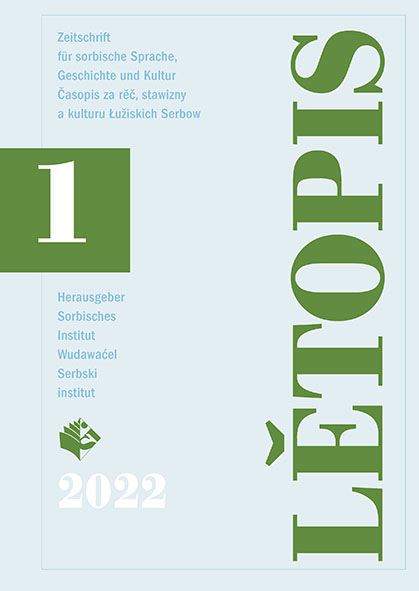Die Mitglieder der Maśica Serbska, ihre soziale Herkunft und ihr Verhältnis zur Gesellschaft in der Oberlausitz
The Members of the Maśica Serbska, their Social Origins and their Relations with Society in Upper Lusatia
Author(s): Martina Noack, Peter SchurmannSubject(s): Cultural history, Culture and social structure
Published by: Domowina-Verlag GmbH / Ludowe nakładnistwo Domowina
Keywords: Lower Lusatia; Upper Lusatia; Sorbian associations; Maśica Serbska; Maćica Serbska; membership and social structure; regional distribution; networks; niederlausitz; Niedersorben; sorbische vereine;
Summary/Abstract: The Maśica Serbska, which was founded in 1880, achieved its largest number of 266 members towards the end of its first decade of existence. Afterwards, the numbers declined continuously up to its prohibition in 1937. Since its refoundation in 1993 it has registered a little more than 20 members. The proportion of Lower Sorbian scholars rose significantly from a quarter to roughly 40 percent over the first three decades. The number of farmers, however, went down steeply, starting from way over a half, then going down to around 20 percent. The proportion of women rose only in the first decades, but, on the other hand, it was only in the Weimar Republic that a woman was entrusted with a leadership role. Up to the turn of the century more than three-quarters of all members came from the Cottbus district, particularly from the parishes of Briesen, Cottbus, Papitz, Werben, and Vetschau. The church superintendent district of Cottbus had the most members with its fifteen parishes. Then came the church districts of Senftenberg and Calau, each containing two parishes, as well as the church district of Spremberg with one parish.
- Issue Year: 2022
- Issue No: 1
- Page Range: 98-130
- Page Count: 33
- Language: German
- Content File-PDF

